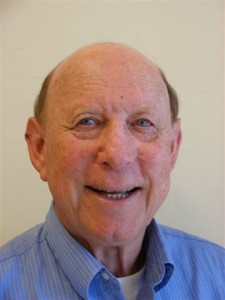Nine months after Gabrielle Giffords was shot in Arizona, she accompanied her astronaut husband, Mark Kelly, to the White House for his retirement ceremony.
Ronald Brill, four-year caregiver for his wife who is diagnosed with Mild Cognitive Impairment, writes, “I wanted to share the following, so other caregivers have a more hopeful and broader perspective on how our self-repairing brain is able to adapt to neurological impairments.”
Gabrielle Giffords — The Mystery of Predicting Her Recovery
Guest Article by Ronald Brill
It was heart-lifting to the nation and particularly to Congresswoman Gabrielle Giffords’ constituents to see her vote in Congress less than seven months after suffering what is usually a fatal bullet wound through the left hemisphere of the human brain. Her presence in the nation’s capitol may also demonstrate how little certainty there is in predicting her brain’s ability to use sound judgment needed to represent us as a U.S. Representative.
Some newspaper letters question Congresswoman Giffords’ potential for recovery. We simply don’t understand how difficult it is to calculate one’s brain resilience and self-repair ability. Even with increasing brain trauma research spurred by treatment of battlefield injuries, neuroscience is not so exact to project with certainty any impaired individual’s future level or rate of recovery.
We need to consider several critical “wild cards” in the brain’s adaptation to injury. “Plasticity” is often used to describe the mysterious way the human brain is able to adapt, “rewire” and heal the loss of other weakened brain cell functions. Neuroscience recognizes each one of our 100 billion brain cells (neurons) can be connected to thousands of other neurons. We are just beginning to discover the bilateral brain’s adaptability that compensates between our two brain hemispheres.
Former Harvard neuroscientist Jill Bolte Taylor has spoken in public and written a moving book entitled, My Stroke of Insight, describing her incredible transformation after a left hemisphere devastating stroke caused such extensive brain damage it prompted an amazing shift in her brain and outlook.
Left hemisphere functions are also involved in “factual” or “explicit” recall of names, dates, places, etc. “Implicit memory” associated with the right hemisphere is often subconscious and experiential, rather than learning-based. This once brilliant scientist evolved as her right hemisphere compensated by building previously underutilized creative and experiential potential. She could sing on key for the first time. Her latent creative potential began to flourish. This brain process is often referred to as “cognitive reserve”.
Bilateral brain compensation may even help those seniors experiencing explicit (left hemisphere) memory problems such as forgetting names and trouble finding words when speaking. Right hemisphere underutilized neurons to the rescue! I bring up these points as a full-time care partner with my wife in the most common early stage cognitive/memory disorder that often precedes Alzheimer’s disease. Over the past four years we have worked together on developing positive lifestyle strategies as we are told it’s a 50% risk that her impairment will progress into dementia. We’re not standing still and awaiting doomsday predictions, because there is 0% recovery from [most causes of] dementia.
Unfortunately, too many seniors experiencing early stage memory symptoms are misunderstood as having the “disease of early dementia.” Too often they’re written off as not being able to benefit from using proactive lifestyle strategies and rely on medication to slow their impairment.
It is in this context that Gabrielle Giffords’ return to vote on the floor of Congress is a powerful message to millions of seniors each year who will find some of their cognitive/memory ability fading. Keep in mind that no two individuals have the same lifestyles, experiences, brain adaptation and recovery rate capacity. The very fact that there is so little certainty in prognosis stems from our inability to comprehend the brain’s uncharted resilience that is too complex to predict.
The challenge to our aging population is seeing the glass (i.e., our brain) half-empty or half-full. Our new community-based Senior Brain Education Network was created to encourage seniors to keep learning ways to nourish brain cells by leading active lives to stimulate the remaining, but often underutilized, life-giving abilities relatively dormant in other brain areas. Who knows in what ways or how much we can prolong overall brain functions that will give us dignity and purpose in later life? Speaking of this uncertain state of neuroscience, my wife’s neurologist put it this way to us: “Our brain is smarter than we are!”
Congresswoman Giffords’ battle should encourage seniors to “keep an open mind” by continuing to learn about our adaptable brain potential to do its work to compensate, self-repair, and heal. In the meantime, brain injury patients and seniors worried about memory loss need to become motivated by taking more proactive steps to preserve the mysterious vitality of this three pound wondrous organ. If it is far more resilient than we think, so are we. Let’s not give up on ourselves or loved ones. It should be good news to us seniors that if our brain-wounded Congresswoman Giffords can stand up and vote in Congress how much are we capable of doing to assist our brain’s vitality and recovery?

Ronald Brill, Founder of the Senior Brain Education Network and Editor of Senior Brain News became his wife’s primary caregiver following her diagnosis of Mild Cognitive Impairment four years ago. With degrees in communications and public health, the former university administrator has developed and presented prevention-focused community education programs on aging brain health for seniors. For a free subscription to Senior Brain News write to Ronald Brill.









If some one wants expert view regarding running a blog after that i
suggest him/her to pay a visit this webpage, Keep up the pleasant work.